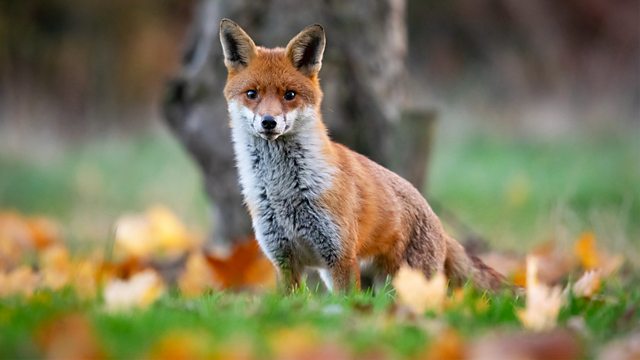Autumnwatch 2022 episode 1: Chris Packham and Michaela Strachan settle into the live cameras at Wild Ken Hill in Norfolk, where beavers are frequenting a floating raft and thermal cameras are poised to capture the natural events that happen after dark.
Iolo Williams and Gillian Burke are at Teifi Marshes in Wales, where Iolo is on the lookout for the locking antlers of the deer rut and Gillian is exploring the natural wonders of Cardigan Bay. They also have live cameras on one of the biggest bat roosts in Wales to witness the comings and goings as they happen.
Springwatch, Autumnwatch and Winterwatch, sometimes known collectively as The Watches, are annual BBC television series which chart the fortunes of British wildlife during the changing of the seasons in the United Kingdom. The programmes are broadcast live from locations around the country in a primetime evening slot on BBC Two. They require a crew of 100 and over 50 cameras, making them the BBC’s largest British outside broadcast events. Many of the cameras are hidden and operated remotely to record natural behaviour, for example, of birds in their nests and badgers outside their sett.
Springwatch begins on the Spring Bank Holiday and is broadcast four nights each week for three weeks. After the success of the first Springwatch in 2005, the BBC commissioned a one-off special, Autumnwatch, which became a full series in 2006. Winterwatch began in 2012, broadcast in January or February.
Autumnwatch 2022 episode 1
Wild Ken Hill
Wild Ken Hill is a rewilding and regenerative agriculture project located in Norfolk, England, at the edge of The Wash. The name Ken Hill probably derives from a chieftain or landowner with the Anglo-Saxon name Cena. The site has been inhabited from ancient times, with hoards including gold torcs, ingot rings, coins, bracelets and scrap metal from the last two centuries BC being found by archaeologists at Ken Hill.
Wild Ken Hill is a lowland farm with some grassland, meadow, heathland and shrub. In the middle of the farm, arable farming and intensive grazing have been replaced with low density herbivores (Red Poll cattle, Tamworth pigs, Exmoor ponies). Woodland thinning encourages wood pasture. European beavers have been reintroduced within an enclosure.
The farm also manages freshwater marsh, river valleys and woodland in a traditional manner in the west of the farm. The eastern part of the farm is used for regenerative agriculture, where “we aim to repair soil health to sequester carbon and boost biodiversity, whilst also delivering good, sustainable yields with minimal use of chemical inputs.
Beaver
Beavers are large, semiaquatic rodents in the genus Castor native to the temperate Northern Hemisphere. There are two extant species: the North American beaver (Castor canadensis) and the Eurasian beaver (C. fiber). Beavers are the second-largest living rodents after the capybaras. They have stout bodies with large heads, long chisel-like incisors, brown or gray fur, hand-like front feet, webbed back feet and flat, scaly tails. The two species differ in the shape of the skull and tail and fur color. Beavers can be found in a number of freshwater habitats, such as rivers, streams, lakes and ponds. They are herbivorous, consuming tree bark, aquatic plants, grasses and sedges.
Beavers build dams and lodges using tree branches, vegetation, rocks and mud; they chew down trees for building material. Dams impound water and lodges serve as shelters. Their infrastructure creates wetlands used by many other species, and because of their effect on other organisms in the ecosystem, they are considered a keystone species. Adult males and females live in monogamous pairs with their offspring. When they are old enough, the young will help their parents repair dams and lodges and may also help raise newly born offspring. Beavers hold territories and mark them using scent mounds made of mud, debris and castoreum, a liquid substance excreted through the beaver’s castor sacs. Beavers can also recognize their kin by their anal gland secretions and are more likely to tolerate them as neighbors.




